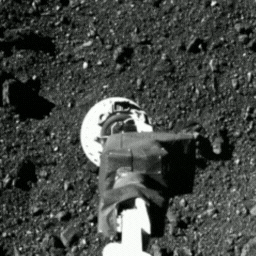NASA is being super coy about showing us their haul of asteroid dirt from Bennu, but the breadcrumbs of information they are teasing us with suggest it's going to be a doozy.
According to a NASA blog post, the initial sample curation is going more slowly than expected, but for the most excellent of reasons: there's so much Bennu dust coating the inside of the canister and the outside of the sample collection head that disassembly is a little trickier than the team thought it would be.
"The very best 'problem' to have is that there is so much material, it's taking longer than we expected to collect it," says deputy OSIRIS-REx curation lead Christopher Snead of NASA's Johnson Space Center.
"There's a lot of abundant material outside the TAGSAM head that's interesting in its own right. It's really spectacular to have all that material there."

TAGSAM stands for Touch-and-Go Sample Acquisition Mechanism, and it refers to the robotic arm with which OSIRIS REx reached out and grabbed a bunch of dirt from asteroid Bennu, which was finally delivered to Earth in late September after an epic 7-year mission.
The TAGSAM head was sealed into the sample canister, which OSIRIS-REx dropped off at Earth as it flew by en route to another asteroid.

Most of the sample is contained within the TAGSAM head, which remains closed. But, before the head was stowed in the canister following sample collection three years ago, scientists saw particles of dust leaking from it. So they expected to find some dust in the canister when they removed the lid on September 26.
They weren't expecting the amount they found. Some of it has been delivered into the excited hands of NASA scientists, who are performing an initial quick analysis to find out roughly what Bennu is made of. This will provide a solid basis for ongoing research once the bulk sample is retrieved from the TAGSAM head.
That initial analysis includes scanning electron microscopy, infrared measurements, and X-ray diffraction. NASA will be hosting a press conference at 11:00 ET on October 11 to reveal the results, as well as the first images of the sample.
We won't be given any really detailed science yet – that will take more time – but the reveal is expected to tell us some of the basics about the small, carbon-rich asteroid, which has a composition that is expected to reveal much about the birth of the Solar System.
An estimated 250 grams of Bennu dust waits inside the TAGSAM head, but that's going to take a little bit more time to open, NASA says. Over the coming weeks, the container will be moved to a new, specialized glove box so that the disassembly can be completed safely.
